TRUNCATED RAYS
Sometimes in reaction wood and even less often in burls, rays that in normal wood are quite long become truncated. Generally, I think, this occurs only in crotch or near-crotch areas (and burls) but I don't know that for sure.
I don't know the mechanism that causes this, other than the obvious fact that reaction wood does not grow quite the same as normal wood. I have seen it in several woods, as shown below. In some cases the wood is known to be, and obvious is, a crotch area. In others it's not obvious that the wood is reaction wood, but given that it has these truncated rays, I've come to the conclusion that it must be and is probably a near-crotch area that doesn't otherwise look like crotch wood. I also note that crotch wood does not always have truncated rays.
Often these pieces are heavier than the normal wood of the species. For example, the first piece below is coffee tree and when I checked it out, prior to doing the end grain analysis, I was very puzzled by the fact that although it appears to be normal coffee tree with just a small knot on one side it was 50lbs/cuft whereas coffee tree normally does not get above about 42lbs/cuft. The end grain analysis showed clearly that it has the truncated rays that, as far as I have been able to determine, only occur in compression wood. Thus the higher than normal weight makes sense.
Generally, in truncated-ray wood, only the rays are affected but I've seen cases (the first example below being a very obvious case of this) where the pores are also affected in one way or another.
For each of the examples below, I have first provided a normal sample of the type of wood and then the sample with the truncated rays. In each case, all of the pics have very large enlargements if you click on them. The normal samples are shown quite small so if you want to see the details you have to go to the enlargement.
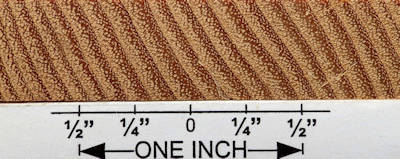
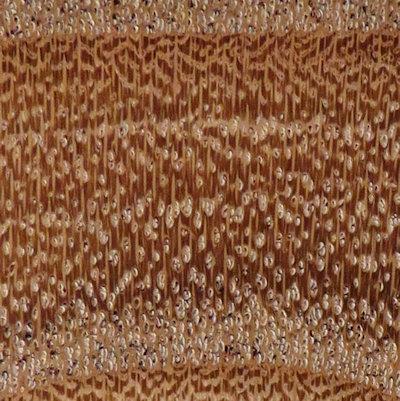
regular coffee tree and truncated-ray coffee tree. In this sample, the pores have also been noticeably affected in the truncated-ray piece, becoming elongated.
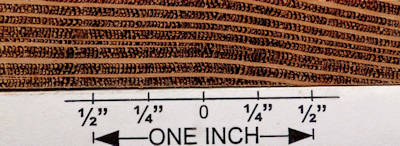
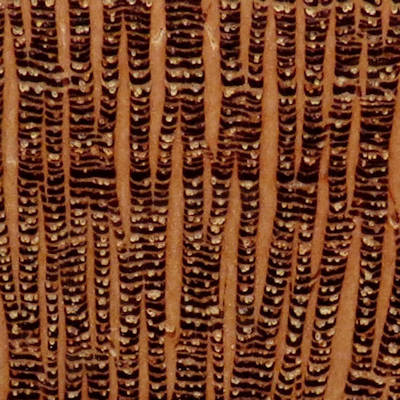
regular leopardwood and truncated-ray leopardwood
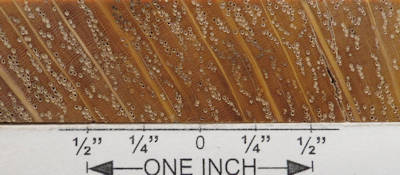
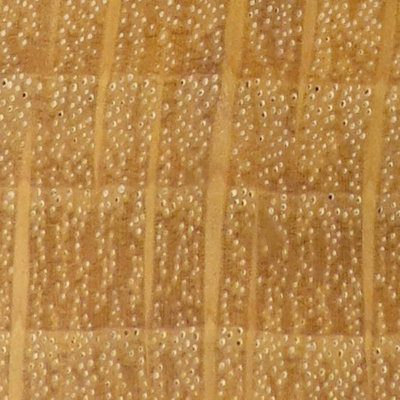
regular live oak and truncated-ray live oak
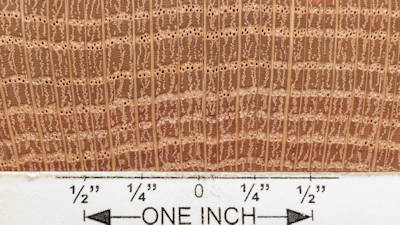

regular red oak and truncated-ray red oak
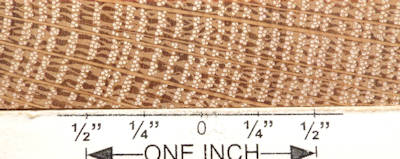
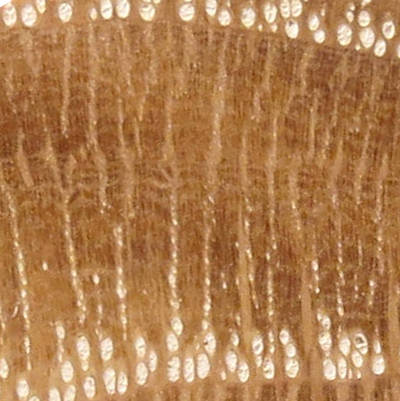
regular white oak and truncated-ray white oak. In the truncated-ray piece, the earlywood pores have been elongated just slightly.

tamarisk with regular grain on the left and a burl showing truncated rays on the right










